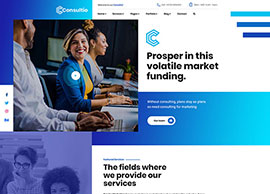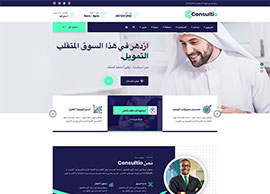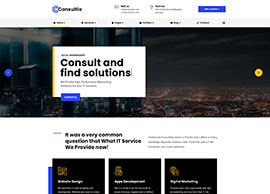Navigating Internal Audits: 5 Invaluable Tips to Avoid Common Mistakes
Introduction
Internal audits play a critical role in ensuring the efficiency, transparency, and compliance of a business’s operations. Yet, even with the best intentions, organizations can occasionally encounter preventable mistakes that undermine the effectiveness of their internal audit processes. In this blog, we’ll delve into the realm of internal audits and present five invaluable tips to assist businesses in avoiding common pitfalls, enhancing their audit practices, and promoting overall operational excellence.
1. Clear Objectives and Scope Definition
Establishing clear objectives and defining the scope of an internal audit is paramount. Without a well-defined purpose, auditors may struggle to focus on key areas, leading to inefficiencies and overlooking critical issues. It’s imperative to collaborate with key stakeholders to identify the audit’s purpose, the areas to be covered, and the desired outcomes.
Key Considerations:
- Collaborate with relevant departments to establish audit objectives.
- Clearly define the scope of the audit to ensure comprehensive coverage.
- Set specific, measurable, achievable, relevant, and time-bound (SMART) goals for the audit.
2. Comprehensive Risk Assessment
A robust risk assessment is the foundation of a successful internal audit. Failure to conduct a thorough risk assessment may result in the omission of high-priority areas, leaving the organization vulnerable to potential threats. By identifying and prioritizing risks, auditors can tailor their audit procedures to address the most critical issues.
Key Considerations:
- Utilize risk assessment frameworks to identify and prioritize risks.
- Consider both internal and external factors that could impact the organization.
- Regularly update risk assessments to stay aligned with changing business landscapes.
3. Effective Documentation and Communication
Accurate and well-organized documentation is the backbone of any internal audit process. Inadequate documentation can lead to confusion, misunderstandings, and missed opportunities for improvement. Clear communication between auditors and stakeholders ensures that audit findings are understood, addressed, and integrated into the organization’s improvement initiatives.
Key Considerations:
- Document audit procedures, findings, and recommendations thoroughly.
- Utilize standardized templates and formats for consistency.
- Foster open communication channels with relevant departments and stakeholders.
4. Independent and Objective Auditors
Maintaining the independence and objectivity of auditors is essential to ensure unbiased evaluations. Internal auditors must have the authority to conduct their assessments without being unduly influenced by management or other departments. Objective auditors offer credible insights that facilitate meaningful change and improvement.
Key Considerations:
- Establish reporting lines to ensure that auditors report to an independent oversight authority.
- Provide auditors with the autonomy to access and analyze information without interference.
- Regularly assess and reaffirm the independence and objectivity of audit personnel.
5. Timely Follow-Up and Continuous Improvement
The value of an internal audit is maximized when findings are acted upon promptly and integrated into the organization’s improvement processes. Failing to follow up on audit recommendations can lead to recurring issues and missed opportunities for growth. A robust follow-up mechanism ensures that audit insights translate into tangible actions.
Key Considerations:
- Develop a structured process for tracking and monitoring audit recommendations.
- Assign ownership and timelines for implementing audit-related actions.
- Regularly review and report on the progress of implementing audit recommendations.
Conclusion
Internal audits serve as a proactive mechanism for identifying operational weaknesses, mitigating risks, and driving continuous improvement within an organization. By adhering to best practices and avoiding common mistakes, businesses can extract maximum value from their internal audit processes. Clear objectives, comprehensive risk assessments, effective documentation, independent auditors, and diligent follow-up are the cornerstones of a successful internal audit framework. When executed with precision, these tips can pave the way for enhanced efficiency, transparency, and operational excellence, positioning businesses for sustained success in today’s dynamic business landscape.
FAQ’s
Q.1 What is the purpose of an internal audit?
An internal audit assesses an organization’s operations, processes, and controls to ensure efficiency, compliance, and risk management. It aims to provide valuable insights for improvement and enhance overall operational excellence.
Q.2 Why is defining the scope of an internal audit important?
Defining the scope of an internal audit ensures that auditors focus on specific areas that are relevant to the organization’s objectives and risks. It helps prevent inefficiencies and ensures a comprehensive evaluation.
Q.3 What role does risk assessment play in an internal audit?
Risk assessment identifies potential threats and vulnerabilities that could impact the organization’s performance. It helps auditors prioritize areas of concern and tailor their audit procedures accordingly.
Q.4 How does effective documentation impact the internal audit process?
Clear and organized documentation ensures that audit procedures, findings, and recommendations are accurately recorded. It enables transparent communication, supports decision-making, and provides a reference for future audits.
Q.5 Why is auditor independence crucial in an internal audit?
Auditor independence ensures unbiased evaluations and credible insights. Independent auditors are better positioned to identify issues and recommend improvements without any conflicts of interest.





































